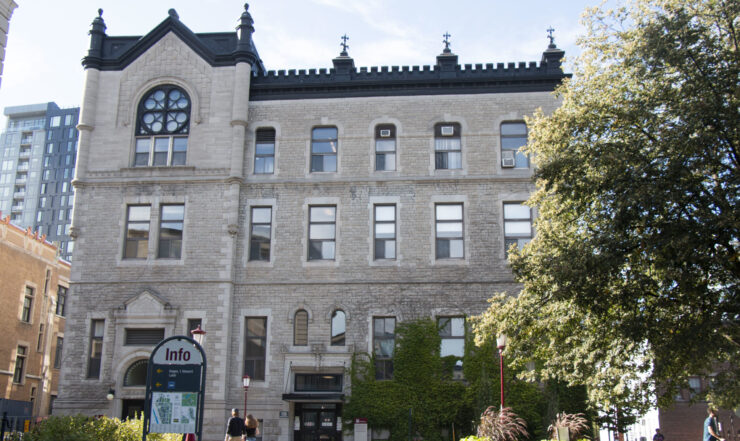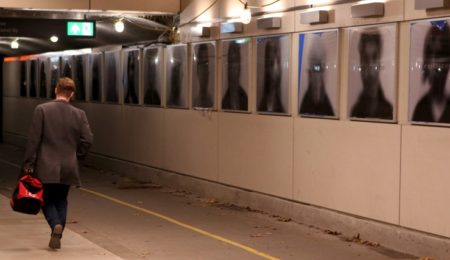Professors and students tell the Fulcrum about COVID-19 policies, virtual learning, and the slow return to classrooms
With classes resuming on Sept. 8, each department at the University of Ottawa is preparing to contend with a hybrid model which will combine in-class and virtual learning. For the various fine arts departments, the demands of both virtual learning and the return to the classroom present a unique set of challenges.
“Everyone is looking forward to the new semester with some amount of excitement and trepidation, but we all are going to make sure that safety measures and the university’s vaccination policies allow us to get back to the university experience,” wrote professor Jakub Zdebik, chair of the department of visual arts in an email to the Fulcrum.
Gabrielle Kaduc-Stojsic, a fourth-year student in history and fine art, is certainly returning to campus with some amount of excitement and trepidation. While previously, visual arts students could expect ongoing feedback from professors, the online format condensed the process to one final critique. In addition, Kaduc-Stojsic says that without the access to programs, supplies, and equipment that is normally found on campus, the costs associated with study have been notably higher than in previous years.
“The critiquing process was just out the window. And access to your tools was really scattered.”
While Kaduc-Stojsic is excited to return to the classroom for studio classes this fall, she is disappointed to see that the arts administration aspect of the fine arts program remains mostly virtual.
“I’m really happy studios are in person. But for somebody who’s more on the arts administration side, I would appreciate still being able to have that higher level of education [in a classroom], because I feel like when it’s in person, you get way more feedback, and feedback is how you learn. I feel like when you don’t have in-person [learning] your quality of education immediately drops.”
In his email, Zdebik noted that the technical, hands-on work in the arts department necessitates a return to classrooms. He added that the department will follow the guidelines issued by the university and will implement capacities on studio classes and disperse students throughout more classrooms to achieve this goal.
Music students excited to return to Perez Hall in greater numbers
Lori Burns, director of the University of Ottawa school of music, agrees that the study of music is not well-suited to a virtual environment.
According to Burns, limited visual scope, sound compression, and delay are all obstacles that prevented students from receiving the best quality of music education during the pandemic.
However, Burns wrote in an email to the Fulcrum that the unique circumstances of the pandemic did allow for music students to acquire experiences that would otherwise have been impossible.
“Students have learned more about technology in the last year than I would ever have imagined. Music students have learned how to record themselves, manage those digital files, and present their recorded performances online,” she wrote.
Burns maintains nonetheless that in-person classes remain the gold standard for music training. The school of music has therefore made efforts to make the 2021-22 academic year more effective without sacrificing safety.
“The summer of 2020 was dedicated to not only identifying the best methods for online delivery, but also to gaining permission from the university administration to offer a selection of significant performance courses in-person at Perez Hall,” wrote Burns.
Chantal Prouse is an office assistant at the School of Music and a student entering her fifth year of a double degree in French horn performance and biochemistry. While she was happy with the hybrid model last year, she’s also excited about more in-person time this fall.
“Last year, I got to do chamber music in person. The opportunity to play music in real time with my teammates is super important,” she said. “Because pre-recording with the metronome is not the same as being able to listen to your teammates, play live and adapt together. And you have more flexibility in person to make those artistic decisions. It’s very difficult to coordinate that over Zoom.”
Last year, a complex booking system ensured that no more than 55 students were in Perez at one time. This lets students like Prouse who did not opt for online lessons could continue to learn in person. This year, that number has been expanded to 120.
The protocols which underwrote these capacity limits, including plexiglass shields, sanitization, and 30-minute resting periods between sessions will be extended. Furthermore, the number of classes that are now held in-person has grown.
Prouse is confident and content with the measures that have been taken.
“This year, I feel confident with everyone coming to campus having to be vaccinated. And we still have a lot of strict masking rules and social distancing rules and the booking system. I think all will be fine. It will be less chaotic than last year. We’re ready.”
Acting students eager to take the stage
Like music, theatre is an inherently collaborative discipline, and the department has implemented a similar system to bring students back together.
Tina Goralski, production manager and part-time professor at the department of theatre, attests to the benefits of in-person learning for students in her department.
“For our BFA acting students, it’s creating an ensemble of artists who know each other well and who can learn to collaborate effectively with one another. For our technical students, it’s being able to get hands-on and on-the-job training in state-of-the-art facilities,” she wrote in an email to the Fulcrum.
The department has accordingly enacted a number of COVID-19 protocols including reducing capacity from 36 square feet per student to 77, increasing fresh air intake in LabO studios, and the demarcation of two-metre distancing squares in studio spaces. Goralski and other administrators will also personally discuss protocols with incoming students as classes resume.
Goralski is excited to welcome students of the performing arts back to the University of Ottawa campus, where she believes the implicit lessons of the arts are best administered.
“While the presentation of a play may be done virtually with varying levels of success, educating artists in the tools of their craft — empathy, listening, reacting, communicating—are not things that are teachable through a screen.”





